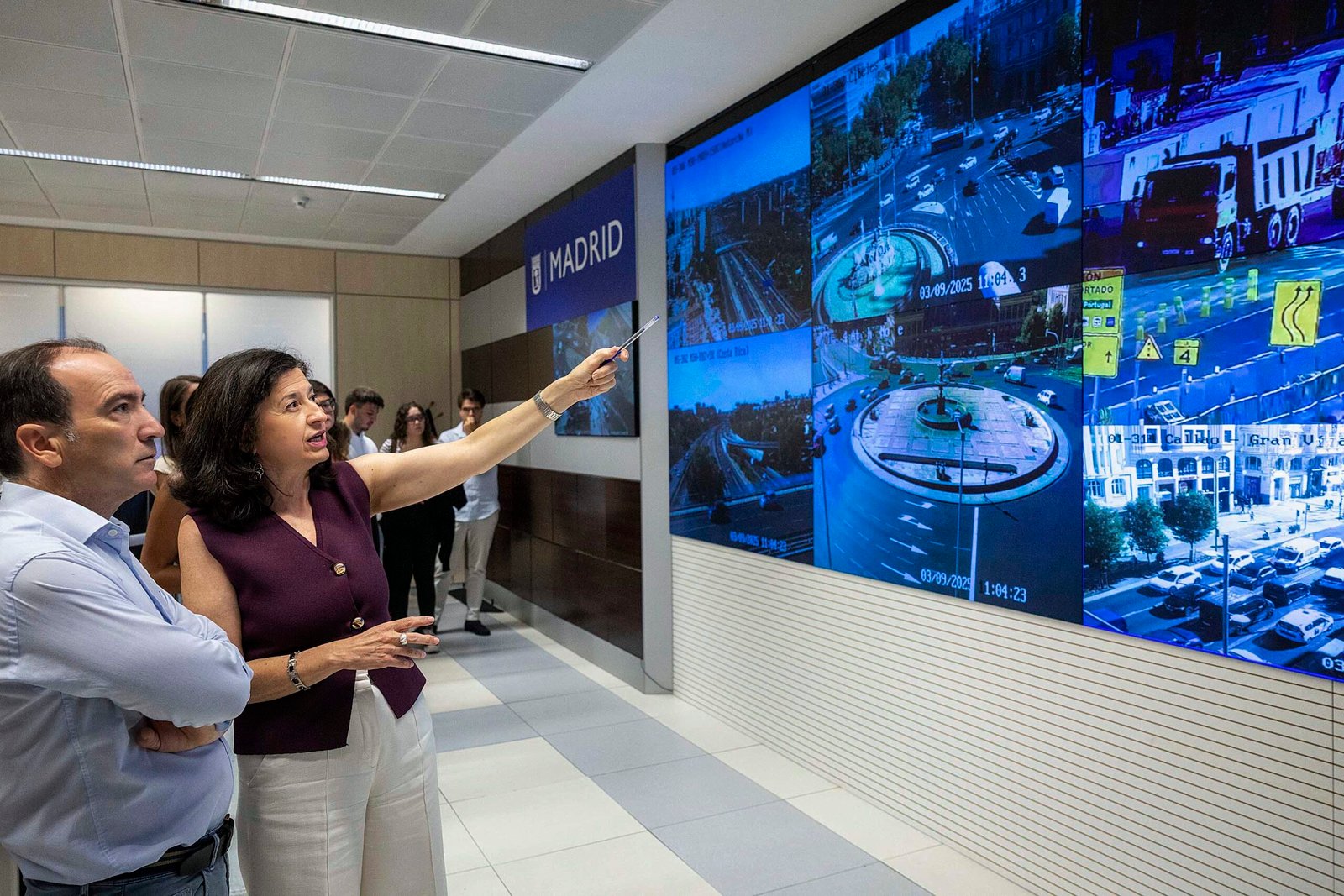The mayor of Madrid, José Luis Martínez-Almeida, has taken stock this morning of the management carried out by the municipal Government team in the first half of the term. Accompanied by area delegates and district councilors, he pointed out that the execution rate of the Government program reaches 51.75%, which represents an increase of 30 points compared to a year ago. "This Government is completely committed to work, effort, and dedication to all the citizens of Madrid," said the mayor, who recalled that "of the 300 measures with which we presented ourselves, we have completed or are implementing 286 (95.33%)."
In his speech, Almeida emphasized that "we live in the best Madrid that we have all created together" and called for taking advantage of this opportunity to take a new leap forward with the aim of "definitively establishing ourselves among the great European and world capitals." He also emphasized that "we are a city that aspires to ensure that every Madrilenian is the owner of their own life" and assured that "that is what we will continue to work on."
He also defended that the achievements reached are the result of the work carried out since 2019 and the city model that has guided municipal policy for decades. "This ‘Moment Madrid’ that we wanted to consolidate is the result of the ‘Model Madrid’," he said, highlighting as pillars of that model "better public policies and better provision of services and infrastructures, with special attention to territorial rebalancing policies." These principles, he emphasized, have allowed Madrid to be "a thriving, vibrant city, full of energy, a reference in the international arena."
Housing Policies
Since Almeida has been in office, the public housing park for affordable rental by EMVS Madrid has grown by 47%, reaching 9,200 units, after a historic municipal investment of 860 million euros. In these two years of his term, the municipal company has completed 1,316 units in 13 developments and has over 6,200 in the planning and execution phase. Among them, the Suma Vivienda Plan, promoted by EMVS Madrid, will allow the construction of 2,200 units through public-private collaboration.
This boost is complemented by an ambitious accessibility strategy, through the Adapta Plan, and urban rehabilitation and regeneration: 100,000 units have already been rehabilitated, and the goal is to reach 120,000 by 2026. Additionally, the City Council has launched the pioneering Regenera Madrid Plan, focused on the transformation of neighborhoods built before 1985, acting for the first time in interblock spaces where it could not before. Works are already underway in Villaverde, Moratalaz, and Villa de Vallecas, and, as announced by the mayor, action will be taken in the Puerto Chico neighborhood (Latina).
Madrid, Almeida assured, is the Spanish administration leading the construction of affordable rental housing, reaffirming its commitment to young people, families, and fair access to housing in a city that has become a European reference in real estate investment.
Vice Mayor, Spokesperson, Security, and Emergencies
Madrid is a city that never stops, which commits this Government to be a city that never stops innovating in key areas such as security and emergencies. That has been the commitment of this Government team in the two years of its term, and as a result, there has been an improvement in the facilities, equipment, and conditions of our essential services. Today, Madrid has nine new Municipal Police stations, nine new SAMUR-Civil Protection bases, and a new fire station (Vicálvaro).
But also, the Municipal Police network will be expanded with three new integrated stations in Villaverde, Vicálvaro, and San Blas-Canillejas, in addition to the new Central Security Station in the east zone. Likewise, next year will see the completion of the new SAMUR-PC base and the new Madrid Health center, both in Moratalaz. And the city’s video surveillance systems have also been expanded, now totaling 367 cameras, of which 83 have artificial intelligence.
Along with the improvement of facilities and resources, there is also a focus on more personnel. Within the framework of the 10,000 Plan, created in this term to progressively strengthen the staff of essential services until reaching 10,000 members by 2027, the City Council has promoted a Employment Plan for the Fire Department, which will exceed 1,700 members with improved working conditions. Also, this summer, 550 new positions will be opened for the Municipal Police.
Since 2020, this Government team has allocated nearly 1 billion euros to territorialized investments in the southern and eastern districts of the city. In 2025 alone, 283 million have been invested, quadrupling the amount allocated in 2019 to make Madrid a city without inequalities.
Urban Planning, Environment, and Mobility
Regarding the Urban Planning, Environment, and Mobility Area, the Mayor highlighted the success represented by the Madrid 360 Environmental Sustainability Strategy, which has led the capital to comply for the third consecutive year with the European directive on air quality, without having to apply the high pollution episode protocol. According to Almeida, Madrid is a reference in this area, as evidenced by the recognition as an Arboreal City by the UN for the sixth consecutive year. Among the advances made towards a more sustainable mobility, he emphasized the role of the Municipal Transport Company of Madrid (EMT Madrid). To quantify this achievement, Almeida recalled that municipal buses set records in 2024, with 476 million passengers, 40 completely ZERO emission lines, and the addition of 1,000 new drivers to the municipal company.
To continue advancing in the successful model that Madrid 360 represents, the Mayor announced the approval this month by the Government Board of the modification of the Taxi Regulation Ordinance, which, among other novelties, will guarantee the provision of service to people with reduced mobility, defining it as a ‘mandatory service’ that no one can reject. The amendment to this ordinance, he announced, will establish the possibility of creating exclusive eurotaxi licenses and awarding them through a competition if the legal requirement of 5% of the total fleet is not met.
In addition to these measures, the great urban transformation that Madrid has experienced in its recent history has begun, explained Almeida, starting with the works to bury the A-5 highway and the construction of the Southwest Green Promenade. In urban planning matters, he emphasized the approval of 87 planning files that will allow for the addition of 9,000 housing units to the city’s park, as well as the unlocking of management instruments, which will result in the construction of over 84,000 more units. In total, 93,000 units have been added since the beginning of the term.
The Mayor also highlighted the recent approval of the Reside Plan, to protect and promote residential use in the city and move tourist apartments out of residential buildings. He also highlighted the presentation last week of the work team’s conclusions of the new Municipal Strategic Plan, the Urban 360 Strategy, whose initial approval in the first half of 2027 will provide Madrid with a 21st-century urban planning tool to replace the 1997 Urban Development General Plan (PGOUM).
Construction and Facilities
Almeida emphasized the urban transformation that Madrid has undergone since taking office as Mayor and highlighted the work in the last two years to launch major projects that will continue to build the city of the future. In this regard, he mentioned that the works on Parque Ventas and Parque Castellana will begin in the coming weeks. Parque Ventas will involve creating a platform over the M-30 for the use and enjoyment of residents through new pedestrian, landscaped, and leisure areas where 591 new trees will be planted. On the other hand, Parque Castellana will bury the northern section of this road, creating a space reclaimed from cars that will be the gateway to the future of Madrid Nuevo Norte and will feature a bike lane, a hill with seating, a monumental fountain, a central square, and a pine forest with children’s playgrounds and a bio-healthy circuit, all surrounded by nearly 800 new trees.
Additionally, in the second half of this year, the remodeling of Calle Alcalá between the Cibeles and Independencia squares will begin to create a walkable boulevard that enhances the value of the Puerta de Alcalá.
During these first two years of the term, other public space regeneration actions have also been initiated, such as the pedestrian route from the heart of Usera to Madrid Río, the renovation of 11 squares, and the rehabilitation of historic colonies and neighborhoods. Furthermore, 60 school environments and 35 elderly and day care centers have been improved to ensure safe and accessible access.
Culture, Tourism, and Sports
The Culture, Tourism, and Sports Area has implemented numerous initiatives in the first half of the term, as highlighted by Almeida. Matadero Madrid has been consolidated as one of the major cultural spaces in Europe with the opening of the Centro Danza Matadero, the upcoming installation of the Pérez Simón collection at the Espacio Cultural Serrería Belga, and the extensive conservation and restoration strategy for the monumental and architectural heritage of Madrid, including the restoration of Beti Jai and the Puerta de Alcalá, recently awarded the Europa Nostra Prize; the Fuente de Neptuno, the oratory of the Casa de la Villa, or the façade of the Museum of Madrid History.
With 11.2 million visitors and 23 million overnight stays in 2024, Madrid is in a phase of consolidation as an international urban destination thanks to a quality, sustainable, and long-range tourism model that has made it the second-best urban destination in the world, with over 56% of international visitors. Within the framework of the Tourism Strategic Plan 2024-2027, policies of decentralization and off-season promotion have resulted in 900,000 tourists arriving in Madrid for nine of the 12 months of the year and the creation of 22 tourist zones, which have diversified tourism flows and balanced the impact of tourism across the city.
Sports has become one of the major drivers of attraction and cohesion in Madrid. The city will host, for the first time, top-level events such as the European Athletics Championship, the NFL, or the Formula 1 Grand Prix, joining established events like the Mutua Madrid Open. This sports calendar places the capital at the global center of sports. Additionally, an unprecedented commitment has been made to grassroots sports, with a 152% increase in aid since 2019, the creation of new children’s sports schools, and a network of renovated facilities, including the opening of 30 municipal swimming pools. Madrid not only hosts sports but drives it from the grassroots and lives it year-round.
Economy, Innovation, and Finance
The year 2025 is marking milestones related to the city’s population and productivity indicators. For the



